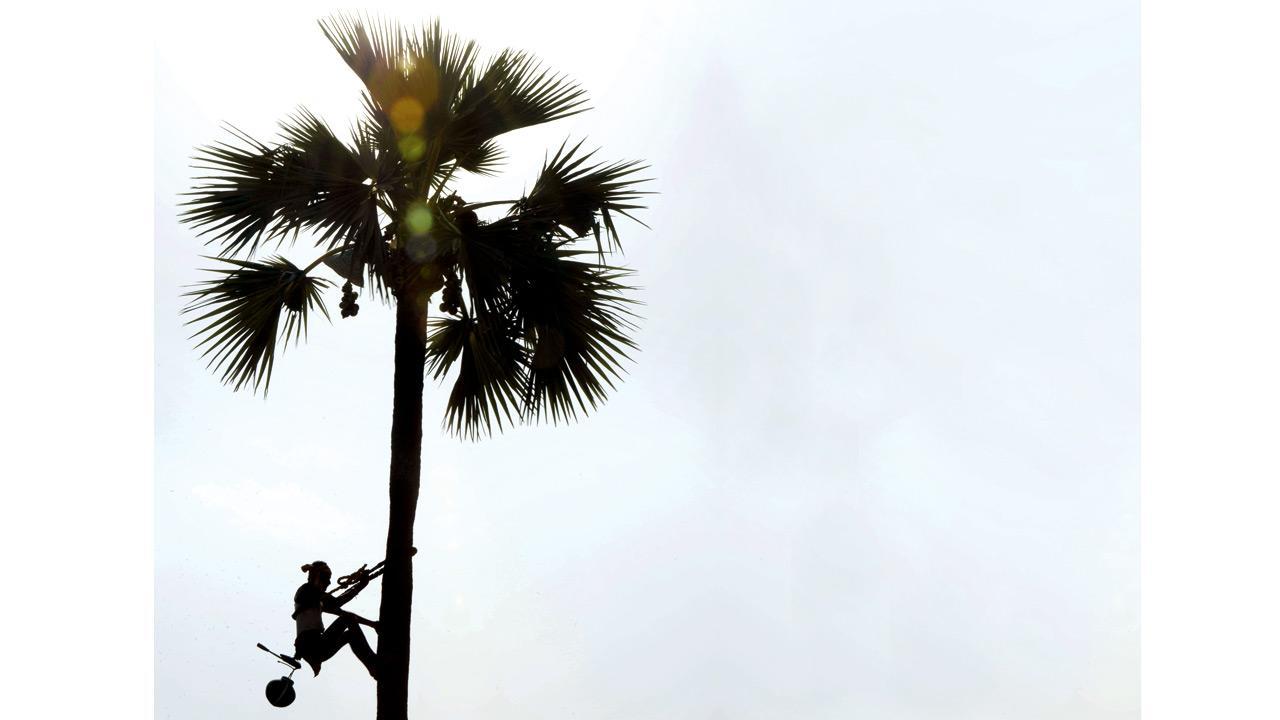In the first comprehensive book about the history of alcohol in India, James McHugh breathes life into the complex world of drinking and abstaining in pre-modern India

Pic/Getty Images
The interviewee is an expert on alcohol in India; this interviewer is a teetotaller. He is in Los Angeles; we are Mumbai, juggling time difference. In the middle of the night over a Zoom call, we discuss the origin of the finest intoxicating drinks in ancient and medieval India. Our heady conversation is a potent mix of beer, palm toddy, and wine, and the processes in which grains, sugars, fruits, and herbs have been used for centuries to make liquor.
ADVERTISEMENT
A scholar of pre-modern South Asian texts, history, and religions with a focus on cultural history and material culture, James McHugh is professor of South Asian religions at the University of Southern California. His first book, Sandalwood and Carrion, written 10 years ago is a study of the sense of smell and the use of aromatics and perfumes in pre-modern Indian culture and religion. His latest, An Unholy Brew: Alcohol in Indian History and Religion, is the first comprehensive monograph on the history of alcohol (and some drugs) in pre-modern India.

A toddy tapper on the outskirts of Hyderabad descends from a tree after collecting sap that he will brew into arrack. McHugh says his research involved speaking to brewers and toddy tappers in India and China. Pic/Getty Images
Surprisingly, not much was previously documented on the subject, nor did McHugh know anything about alcohol in India—it was a perfectly large project to keep him going. Seven years to be precise. It entailed a detailed study of various texts in Sanskrit, Pali, and Prakit, along with fieldwork in India and China, meeting brewers, toddy tappers, Vedic scholars, and tantric practitioners to understand the technology of ancient brewing as well as the theorisation of alcohol and intoxication in Hindu, Buddhist, and Jain legal texts. In one chapter, he mentions how Buddhist monks and nuns, forbidden to take liquor, were permitted sugary “medicines,” namely honey (madhu) and sugarcane syrup (phānita), along with oil, ghee, and butter during the hours when otherwise they had to fast. Monks were also permitted several sugary fruit juices, though it’s notable that the juice of mahua flowers (madhukapuppharasa) was specifically disallowed, presumably owing to its associations with liquor.
There is also the mention of apong, a drink made by the Mising People of Northeast India. One variety is made by adding the ash of rice husk to cooked rice, along with starter cakes. The semi-solid mixture is fermented in a jar and then placed in a cone-shaped bamboo basket lined with leaves and suspended over a vessel. Water is poured over the mixture, and the apong drips out of this filter cone. Another, simpler drink, handia or haria, is brewed in parts of Odisha and West Bengal. This drink is made by mixing small starter cakes (rice flour and herbs that have been mixed and left to develop certain flora with fermenting powers) called ‘ranu’ to cooked rice. The mixture is fermented in jars and then strained.

A resident of a tribal village in Bolangiri, Odisha, picks mahua flowers to brew liquor. James McHugh says Buddhist monks and nuns, forbidden to take liquor, were permitted sugary “medicines,” namely honey (madhu) and sugarcane syrup (phanita), along with oil, ghee, and butter during the hours when otherwise they had to fast. Monks were also permitted several sugary fruit juices, although the juice of mahua flowers (madhukapuppharasaṃ) was specifically disallowed, presumably owing to its associations with liquor. Pic/Getty Images
In one of the chapters on sura, McHugh brings to light how this drink has been largely absent from surveys of alcohol history. Confusing to many scholars of early India, sura was made from grains and was highly developed as a drink and discussed in many texts in pre-modern India. Like beer or ale in Europe, the word sura covers a number of drinks and the one made from grains was likely to be associated with local agricultural production (as opposed to, e.g., imported wine). The experts brewed simpler versions for occasions.
Many a time, McHugh would go through laborious texts, only to find one or two relevant lines to take away. “It was a circular process. I read and translated the material I found, starting from the recipes for a given drink, and then looked for references to those drinks in a text, cycling through the material quite a few times until it illuminated itself,” he adds. He learnt that in some ways, the archives have very a limited perspective. “There aren’t many voices or texts written by brewers, and some Buddhist or dharmashastra texts essentially frown on drinking, so you don’t get the whole picture. On the other side, the Sanskrit archive is enormous with so much material that can be used for methodological reflection—for instance, the description of people in the drinking house are tentative and hypothetical, based on very filtered material,” he adds.

James McHugh
While Islam and Christianity have been left out in the research, McHugh says it is simply because of the languages he is trained in—Sanskrit, Pali, and Prakrit. “There have been classical exclusions as well—like there’s no classical Tamil or medieval Marathi material. The blurb on the book says comprehensive but it is along the lines of everything from recipes to tantras and medicine, it’s not comprehensive in terms of all periods, religions, and regions. That’s good, because there is so much more work to do and this book is a promising start.”
Why unholy brew? we ask. “Brewing in India was understood as a putting together of things that created intoxicating power; hence, ‘brew’. I chose ‘unholy’ because it was about religion and religious texts. But also, unholy sometimes has that sense of expression, like the horrific noise first thing in the morning and you’d say, what was that unholy terrible noise? Besides, I was stuck with the title because I was commissioned to it. By the end of the book, I had an urge to use the title ‘an ocean of sura’ but it was too late to change it.”
Written in a simple, lucid manner, this book is for anyone interested in this unique aspect of Indian history or the history of alcohol in general. For those who refrain from alcohol, there are also some sophisticated arguments against drinking.
Cups and chapters
McHugh has introduced an interesting way to structure the book with nine cups (chapters). The reader experience goes from the basic—drinks and drinking; to the higher-order—drink and religion. The cups take inspiration from Goddess Sura (Varuni) devi who in one tantric text describes in detail the cups and jars in which she serves the gods, and when one drop falls onto the earth, it becomes the source of all the drinks here!
Rapid fire on ancient booze
Sura or soma?
Sura, the drinks of the humans. Soma is divine. I don’t think I’d be allowed that.
Wine or toddy?
Toddy is great and fresh, but I am just more accustomed to wine.
Favourite story from the book?
The one at the beginning where this man discovers alcohol in a tree and starts selling it with a friend; then Buddha from his previous birth comes in the form of Indra and asks him to refrain from doing it.
Most fascinating drink from the ancient texts?
Myrah. Sugar in the form of honey or similar is fermented with herbs and peppers and jaggery is added to let that ferment a second time. It has dry, complicated flavours.
The book on fragrance or book on alcohol—your favourite?
Both led me to meet with all kinds of people—perfumers, aromatics, brewers, etc. The stories in the alcohol one are more fun; even the bad stuff had drama. The perfume one was more romantic and sedate.
Did the book change your drinking habits?
I am more open-minded towards drinking traditional drinks [now]. I find them to have a more nutty, woody oxidised flavour that you experience in say, sherry and dry madeira. I seek those now.
 Subscribe today by clicking the link and stay updated with the latest news!" Click here!
Subscribe today by clicking the link and stay updated with the latest news!" Click here!







